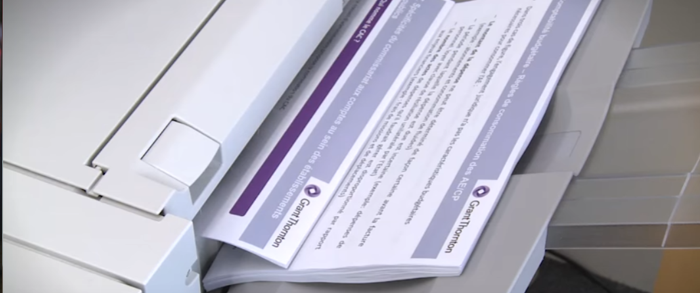This guest post by Hervé Lesage, Global Marketing Manager Financial Services Industry, originally appeared on LinkedIn.
It is forecasted that new digital technologies such as Robotic Process Automation, machine learning, blockchain and IoT will totally change the office work landscape and upend the way we all work.
No industry will be left untouched, and all kinds of work will be affected to a greater or lesser extent. And though it was initially assumed that mainly lower skills jobs will be replaced by these new automation techniques, it is now recognized that highly paid/high skills jobs will be concerned as well, since some of the tasks performed by these top executives will be automated, too.
Clearly, the more prevalence of knowledge work in a company, the higher the likelihood to find opportunities in automating the work processes. In this respect, financial and insurance companies are particularly well placed, considering the time employees spend handling information, collecting data, sharing documents, creating notes, sending emails, etc.
Let’s imagine the burden of data and document manual handling: a teller checking customer information to on-board a new customer; a mortgage officer trying to obtain a loan approval for a customer; a compliance officer trying to get access to customer information to give evidence that KYC/AML procedures were respected and ensure the regulator audit will be safe; or a claim officer investigating a customer demand.
Actually, according to a McKinsey survey “Where machines could replace Humans”, “in financial services, 50 percent of the time spent in the workplace involves collecting and processing data.” And “…the financial sector has the potential to automate activities taking up 43 percent of its workers’ time. The potential is higher for some occupations than for others. For example, we estimate that mortgage brokers spend as much as 90 percent of their time processing applications.”
That leaves room for big automation potential for. Of course, it will be necessary to select and implement the right solutions, which isn’t an easy task, considering that legacy infrastructure with a myriad of different systems plague many financial services companies.
Now the different benefits to expect make the transformation journey worthy of starting: costs reductions come first, and also labor reduction. Most importantly, it will deliver more efficiency and quality of services to customers, whose loyalty is no longer based on the brand promise, but fluctuates according to day-to-day relations as Millennial behaviours show.
So, where to start or continue this journey that will deliver the promises contained in digitization and automation, and will make our workplaces better havens for producing quality services for our customers and better employee life at work?
You should start by understanding very accurately where you stand by assessing a situation by the details and by garnering the adequate data that will enrich the decisions you are taking.
At Xerox, we use Workflow Assessment and Document Analytics tools to customize the solutions that can deliver, for a specific company context, the efficiency leaps the office is in search of.



